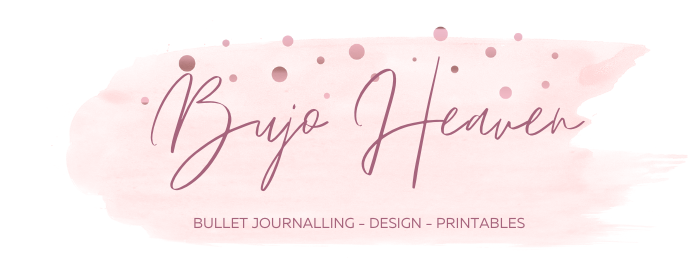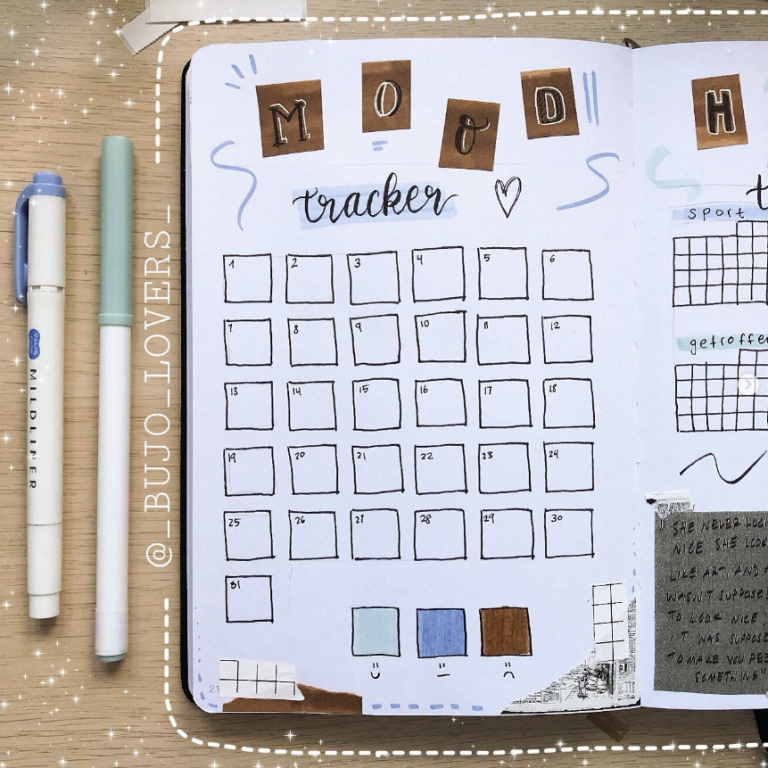Bullet journaling is a popular method of organising and tracking tasks, goals, and habits. It is a flexible system that can be customised to suit individual needs and preferences. Bullet journaling can be an effective way to increase productivity, reduce stress, and improve mental wellbeing.
To start a bullet journal, the first step is to choose a notebook. Any notebook can be used, but many bullet journal enthusiasts prefer dot grid or squared paper to help with drawing straight lines and creating layouts. The next step is to create an index, which is a table of contents for the journal. This makes it easy to find specific collections or pages within the journal. Numbering each page as it is created is essential for the index to work effectively.
Once the index is set up, the next step is to create collections. These are pages dedicated to specific topics, such as monthly or weekly logs, habit trackers, or project plans. Each collection should have a title and be added to the index. Bullet journaling allows for a high degree of flexibility, so collections can be added or removed as needed. With these basic steps, anyone can start a bullet journal and begin reaping the benefits of this popular productivity tool.
Choosing the Right Journal
When starting a bullet journal, choosing the right journal is crucial. There are a few things to consider when selecting a journal that will work for you.
Our Recommendation:
LEUCHTTURM1917 Notebook A5 Dotted
Paper Quality
The paper quality of the journal is important as it affects the writing experience. A journal with thin paper can cause ink to bleed through, making it difficult to read and write. On the other hand, a journal with thick paper can prevent ink from bleeding through, making it easier to write and read. It’s recommended to choose a journal with paper of at least 100gsm.
Binding
The binding of the journal is also an important factor to consider. There are two types of binding: spiral and stitched. Spiral binding allows the journal to lay flat, making it easier to write on both sides of the page. Stitched binding, on the other hand, is more durable and can withstand wear and tear better than spiral binding.
Size
The size of the journal is a personal preference. Some people prefer a small journal that can easily fit in a pocket or purse, while others prefer a larger journal that gives them more space to write and be creative. It’s important to choose a size that suits your needs and lifestyle.
Dot Grid or Lined Paper
Bullet journals typically use either dot grid or lined paper. Dot grid paper provides more flexibility and freedom to create different layouts and designs. Lined paper, on the other hand, can be useful for those who prefer a more structured approach to their journal. It’s recommended to choose a journal that offers both options so that you can experiment and find what works best for you.
Overall, choosing the right journal is an important step in starting a bullet journal. By considering paper quality, binding, size, and paper type, you can find a journal that suits your needs and preferences.
Recommended reading:
The Bullet Journal Method by Ryder Carroll
Read the best selling book from the creator of the Bullet Journal method.
Bullet Journal Key Creation
Creating a key is an essential step in starting a bullet journal. This key will help you keep track of your tasks, events, and notes. It is a visual representation of the symbols and colours used in your journal. In this section, we will discuss how to create a bullet journal key, including symbols and colour coding.
Symbols
Symbols are a crucial element of a bullet journal. They help you quickly identify the type of task or event you have recorded. Here are some common symbols used in bullet journals:
| Symbol | Meaning |
|---|---|
| ● | Task |
| ○ | Event |
| — | Note |
| ✓ | Completed Task |
| → | Migrated Task |
| ← | Scheduled Task |
| ❌ | Cancelled Task |
| ❗ | Important Task |
You can create your own symbols or modify the existing ones to suit your needs. It’s essential to keep your symbols simple and easy to remember.
Colour Coding
Colour coding is another useful tool in a bullet journal. It helps you quickly identify the type of task or event and adds a visual element to your journal. Here are some common colours used in bullet journals:
- Red: Urgent or important tasks
- Blue: Personal tasks or events
- Green: Work-related tasks or events
- Yellow: Ideas or inspiration
- Purple: Self-care or relaxation
You can create your own colour code or modify the existing one to suit your needs. It’s essential to keep your colour code simple and easy to remember.
In conclusion, creating a key is an essential step in starting a bullet journal. Symbols and colour coding are two useful tools that can help you quickly identify the type of task or event you have recorded. It’s essential to keep your key simple and easy to remember.
Setting Up Your Bullet Journal
When it comes to setting up a bullet journal, there are a few key elements that are essential for success. These include an index page, future log, monthly log, and daily log.
Index Page
The index page is a crucial part of the bullet journal system. It allows users to easily find specific pages and content within their journal. To create an index page, simply reserve a few pages at the beginning of the journal and number each page. Then, create a list of topics or page numbers that correspond to the content within the journal.
Future Log
The future log is a place to keep track of important events and tasks that are scheduled to occur beyond the current month. To create a future log, divide a two-page spread into six sections, one for each month, and write the name of the month at the top of each section. Then, write down any appointments, deadlines, or other important events that are scheduled to occur during each month.
Monthly Log
The monthly log is a place to keep track of important events and tasks that are scheduled to occur during the current month. To create a monthly log, divide a two-page spread into three sections: a calendar section, a task section, and a notes section. In the calendar section, write down the dates of the month and any important events or appointments. In the task section, write down any tasks that need to be completed during the month. In the notes section, write down any other important information or reminders.
Daily Log
The daily log is a place to keep track of tasks, events, and notes for each day. To create a daily log, simply write down the date at the top of the page and then create a list of tasks, events, and notes for that day. Use bullet points or symbols to indicate the status of each task (e.g. completed, in progress, cancelled, etc.).
By setting up these key elements in their bullet journal, users can stay organized and on top of their tasks and events. With a little bit of practice, anyone can create a bullet journal that works for them and helps them achieve their goals.
Creating Collections
Collections are an essential part of bullet journaling. They are pages dedicated to a specific topic or theme. Collections can be used to track long-term goals, habits, and tasks. They can also be used to organize ideas, thoughts, and inspiration. Creating collections is easy and can be done in just a few simple steps.
Task List
A task list is a collection of tasks that need to be completed. It is a great way to keep track of what needs to be done and when. To create a task list, simply write down the tasks that need to be completed and assign a due date if necessary. You can use bullet points or checkboxes to mark off completed tasks.
Habit Tracker
A habit tracker is a collection of habits that you want to develop. It is a great way to monitor your progress and stay motivated. To create a habit tracker, write down the habits that you want to develop and track them daily. You can use a table or a grid to track your progress.
Mood Tracker
A mood tracker is a collection of moods that you experience. It is a great way to monitor your emotional well-being and identify patterns. To create a mood tracker, write down the moods that you experience and track them daily. You can use a table or a graph to track your moods.
Creating collections is an important part of bullet journaling. It allows you to track your progress, stay motivated, and stay organized. By creating collections for tasks, habits, and moods, you can improve your productivity, well-being, and overall quality of life.
Maintaining Your Bullet Journal
Once you have set up your bullet journal, it is important to maintain it properly. This section will cover two important aspects of maintaining a bullet journal: regular review and the migration process.
Regular Review
One of the key benefits of a bullet journal is that it allows you to track your progress and stay on top of your goals. However, this can only be achieved if you regularly review your journal. It is recommended that you review your journal on a daily, weekly, and monthly basis.
During your daily review, take a few minutes to look over your tasks for the day and make any necessary adjustments. This will help you stay on track and ensure that you are making progress towards your goals.
During your weekly review, take a more in-depth look at your journal. Review your progress over the past week, evaluate your goals, and make any necessary adjustments. This will help you stay focused and ensure that you are making progress towards your long-term goals.
During your monthly review, take a step back and evaluate your progress over the past month. Look at your goals and evaluate whether you are on track to achieve them. Make any necessary adjustments to your goals and tasks to ensure that you stay on track.
Migration Process
The migration process is an important part of maintaining your bullet journal. It involves transferring any unfinished tasks from one month to the next. This ensures that you don’t forget about important tasks and helps you stay on track.
At the end of each month, take some time to migrate any unfinished tasks to the next month. This involves reviewing your tasks and deciding which ones are still relevant. You can then transfer these tasks to the next month and add any necessary notes or details.
It is important to note that not all tasks need to be migrated. If a task is no longer relevant or important, you can simply cross it out and move on. This will help you stay focused on the tasks that are most important and ensure that you are making progress towards your goals.
Maintaining your bullet journal is an important part of achieving your goals. By regularly reviewing your journal and following the migration process, you can stay on track and make progress towards your long-term goals.
Conclusion
Starting a bullet journal can seem intimidating at first, but with the right resources and mindset, anyone can create a successful and personalised system to organise their life. By following the steps outlined in this guide, readers can create a bullet journal that fits their unique needs and preferences.
One of the key benefits of bullet journaling is its flexibility. Users can customise their journals to include whatever elements they find most helpful, whether that be a daily to-do list or a monthly habit tracker. Additionally, the act of physically writing down tasks and goals has been shown to improve memory and increase productivity.
It’s important to remember that bullet journaling is a personal system, and what works for one person may not work for another. Experimenting with different layouts and techniques can help users find what works best for them.
Overall, starting a bullet journal is a great way to take control of one’s schedule and improve organisation skills. With a little bit of time and effort, anyone can create a system that helps them achieve their goals and live a more fulfilling life.








